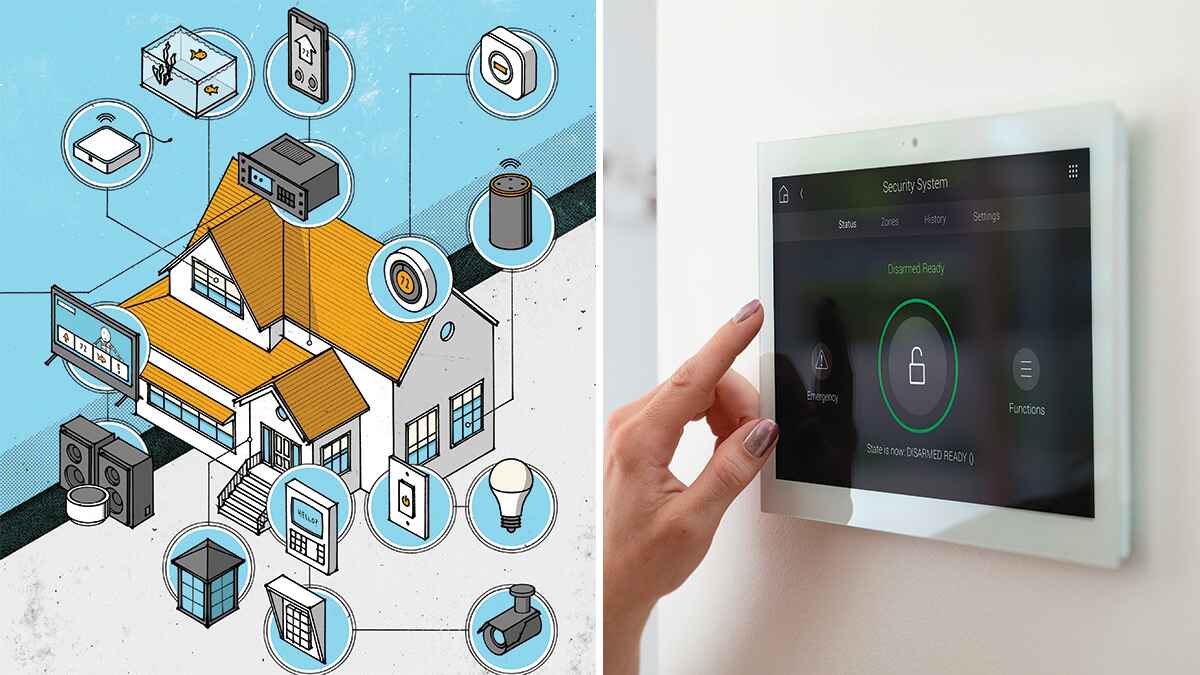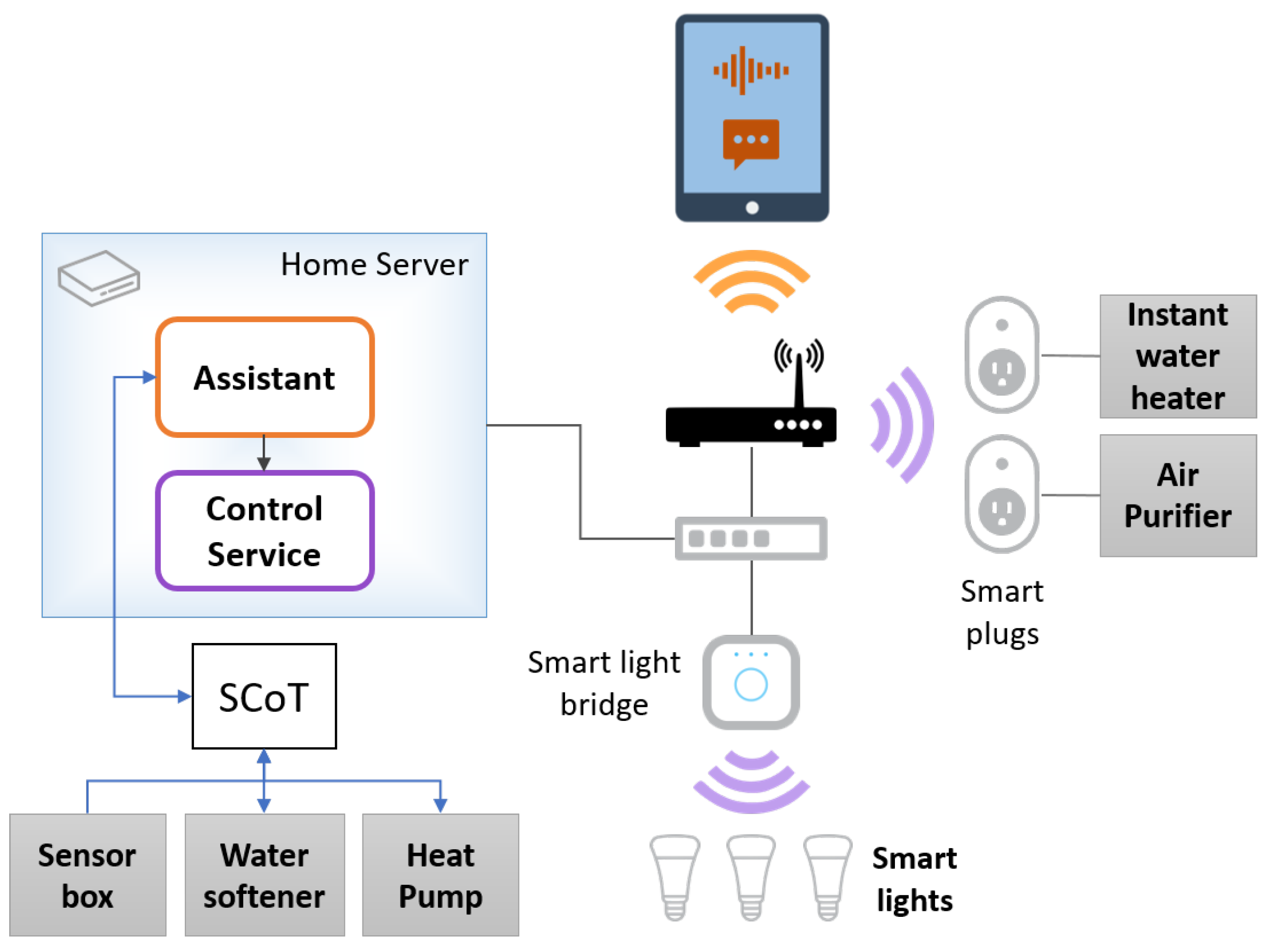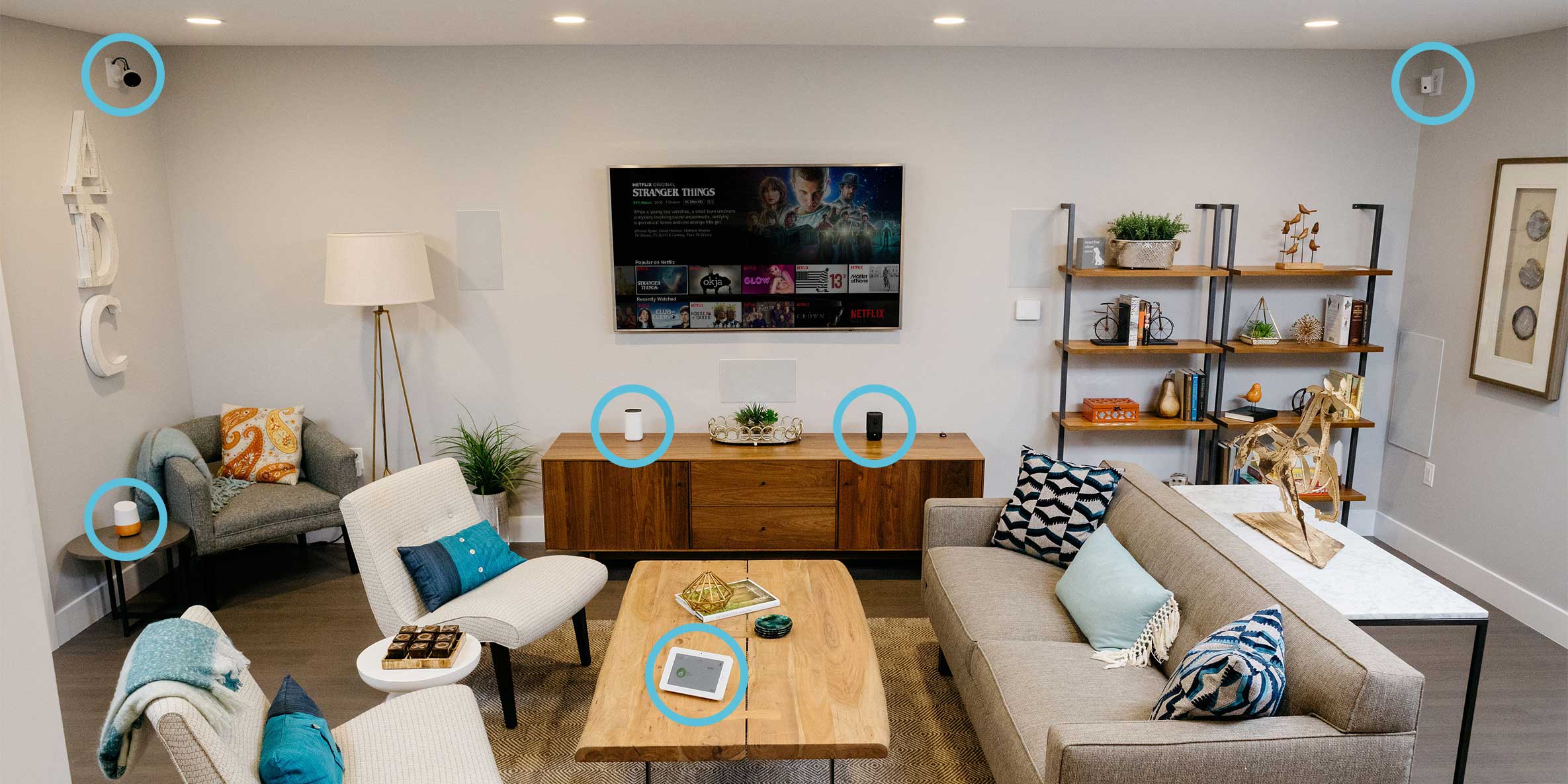Imagine a world where your home is seamlessly connected and controlled by multiple smart devices, all working together to make your life easier and more convenient. This is the magic of integration, where different smart home devices come together in harmony within your ecosystem. Gone are the days of toggling between multiple apps or remotes to control various devices – now you can effortlessly manage and customize your entire home with just a few taps or voice commands. In this article, we will explore the wonders of integration and how it can transform your living space into a truly smart home experience.

This image is property of i.ytimg.com.
What is Smart Home Integration
Definition
Smart Home Integration refers to the process of connecting and controlling multiple smart home devices in your ecosystem seamlessly. It involves connecting devices such as smart speakers, thermostats, lighting, and security systems to a central hub or platform, allowing you to control and automate various functions of your home.
Benefits of Smart Home Integration
Smart Home Integration offers a range of benefits that enhance the convenience, energy efficiency, and security of your home. By integrating multiple devices, you can control them all from a single hub, simplifying and streamlining your smart home experience. This integration also allows for automation, enabling devices to work together seamlessly and perform tasks automatically. This level of connectivity and automation creates a more efficient and comfortable living environment.
Types of Smart Home Integration
There are different types of smart home integration, depending on the devices and platforms used. Some of the common types include:
- Device-to-Device Integration: This involves connecting and controlling devices directly through their respective apps or platforms.
- Hub-to-Device Integration: This utilizes a central hub or smart home platform to connect and control multiple devices.
- Cloud-based Integration: This type of integration relies on cloud services to connect and control devices remotely.
Key Smart Home Devices
Smart Speakers
Smart speakers, such as Amazon Echo or Google Home, are voice-controlled devices that act as the central hub of your smart home. They allow you to control other devices, play music, answer questions, and perform various tasks using voice commands.
Smart Thermostats
Smart thermostats, like the Nest Learning Thermostat or Ecobee, allow you to control and automate your home’s heating and cooling systems. They learn your preferences, adjust temperature settings based on your behavior, and can be controlled remotely for improved energy efficiency.
Smart Lighting
Smart lighting systems, such as Philips Hue or LIFX, offer customizable lighting options. They enable you to control the brightness, color, and scheduling of your lights through a smartphone app or voice commands, creating ambiance and saving energy.
Smart Security Systems
Smart security systems, like Ring or Arlo, provide enhanced home security through integrated cameras, sensors, and alarms. These devices can be controlled remotely, send real-time notifications, and allow for monitoring and recording footage for peace of mind.

This image is property of venturebeat.com.
Importance of Integration
Seamless Control and Automation
One of the key benefits of smart home integration is seamless control and automation. By integrating multiple devices, you can control them all from a single platform, eliminating the need to switch between different apps or devices. This integration allows for automation, where devices can work together based on preset rules or triggers. For example, you can set your smart thermostat to adjust the temperature when you leave home or have your lights turn on automatically when motion is detected.
Enhanced Convenience
Smart home integration enhances convenience by providing centralized control over various devices. With a single hub or platform, you can easily control and manage your smart speakers, thermostats, lighting, and security systems. This convenience allows you to streamline your daily routines, save time, and simplify the management of your smart home ecosystem.
Energy Efficiency
Integrating smart home devices can lead to improved energy efficiency. For instance, by connecting your smart thermostat with your lighting system, you can automate lighting adjustments based on occupancy or time of day, reducing unnecessary energy consumption. Additionally, integrating your devices allows for better coordination and optimization of energy usage, resulting in lower utility bills and a more eco-friendly home.
Improved Security
Smart home integration plays a crucial role in enhancing home security. By integrating security cameras, sensors, and alarms with other devices, you can create a comprehensive security system. This integration enables real-time monitoring, remote access, and notifications for any suspicious activities. The ability to control and automate security settings provides peace of mind and protects your home and loved ones.
Popular Smart Home Integration Platforms
Apple HomeKit
Apple HomeKit is a smart home platform that allows you to connect, control, and automate various HomeKit-compatible devices using Apple devices such as iPhones, iPads, or HomePods. It provides a secure and user-friendly interface for managing your smart home ecosystem.
Google Assistant
Google Assistant is a powerful voice assistant that integrates with a wide range of smart home devices. It allows for voice-controlled commands, enabling you to control and automate your smart home ecosystem using Google Home devices or smartphones.
Amazon Alexa
Amazon Alexa is a popular voice assistant that works with numerous smart home devices. With Alexa-enabled devices like the Amazon Echo, you can control and manage your smart home ecosystem using voice commands. It supports a vast library of skills and is known for its compatibility with a wide range of smart home products.
Samsung SmartThings
Samsung SmartThings is a versatile smart home platform that supports a wide range of devices, including smart speakers, cameras, door locks, and more. It provides a unified interface for controlling and automating your smart home ecosystem, making it easy to customize and manage your devices.

This image is property of robots.net.
How to Integrate Multiple Smart Home Devices
Check Device Compatibility
Before integrating multiple smart home devices, it is essential to check their compatibility with the chosen smart home platform or hub. Ensure that the devices you want to integrate are supported and can communicate with the central hub or platform.
Connect Devices to a Central Hub
To integrate multiple smart home devices, you need to connect them to a central hub or platform that serves as the control center. This typically involves following the manufacturer’s instructions to connect each device to the hub using Wi-Fi, Bluetooth, or other supported protocols.
Install and Set Up the Integration App
After connecting the devices to a central hub, you will need to install and set up the integration app associated with the hub or platform. The app allows you to control and configure the connected devices, create automation routines, and personalize your smart home experience.
Configure Automation and Control
Once the devices are connected and the app is installed, you can configure automation and control settings. This involves creating automation routines, setting up voice commands, and customizing device settings according to your preferences. You can create schedules, scenes, and rules to automate tasks and control multiple devices simultaneously.
Common Integration Challenges
Incompatibility Issues
One common challenge in smart home integration is dealing with compatibility issues. Not all smart home devices are compatible with each other or with certain smart home platforms. It is essential to carefully research and choose devices that work together seamlessly or invest in a hub that supports a wide range of devices.
Complex Setup and Configuration
The setup and configuration process of integrating multiple smart home devices can be complex and time-consuming. Each device may have different setup requirements, and troubleshooting potential issues may require technical knowledge. Patience and thorough understanding of the manufacturer’s instructions are key to overcoming these challenges.
Interoperability Problems
Interoperability issues can arise when integrating devices from different brands or ecosystems. Some devices may not communicate effectively with others, leading to limited functionality or reduced automation capabilities. Prioritizing devices that adhere to interoperability standards or opting for a versatile hub with broad device compatibility can help mitigate such problems.

This image is property of www.mdpi.com.
Tips for Successful Integration
Research and Choose Compatible Devices
To ensure successful integration, it is crucial to research and choose compatible devices that work well together. Consider compatibility with your chosen smart home platform or hub, as well as compatibility between different devices you plan to integrate.
Ensure Stable Internet Connection
A stable internet connection is vital for the smooth operation and control of your smart home devices. Ensure that your Wi-Fi network is reliable and has sufficient coverage throughout your home. This will prevent connectivity issues, speed up communication between devices, and provide a seamless experience.
Keep Firmware and Software Up to Date
Regularly updating the firmware and software of your smart home devices and the integration app is essential. These updates often bring bug fixes, security patches, and new features that can improve performance and enhance compatibility between devices.
Test and Troubleshoot
During the process of smart home integration, it is essential to test and troubleshoot the system. This involves checking if all devices are properly connected, automation routines are functioning as expected, and voice commands are recognized accurately. Regularly testing and troubleshooting can help identify and resolve any issues promptly.
Future Trends in Smart Home Integration
Artificial Intelligence and Machine Learning
The future of smart home integration lies in the integration of artificial intelligence (AI) and machine learning (ML) technologies. These advancements will enable devices to learn from user behavior, adapt to preferences, and automate tasks more intelligently.
Voice Control and Natural Language Processing
Voice control and natural language processing are expected to continue evolving and becoming more sophisticated. This trend will enable users to control their smart home devices more naturally, using conversational commands and allowing for a more intuitive and seamless user experience.
Smart Home as a Service
Smart Home as a Service (SHaaS) is a growing trend wherein service providers offer bundled smart home solutions, including device integration, maintenance, and support. This trend allows homeowners to enjoy the benefits of smart home integration without the hassle of setup and configuration.
Interoperability Standards
As the smart home industry continues to grow, interoperability standards will play a crucial role in ensuring seamless integration between devices from different manufacturers and ecosystems. The development of common standards will simplify the integration process and enhance compatibility between devices.

This image is property of www.vectorsecurity.com.
Privacy and Security Considerations
Data Protection and Encryption
Privacy and data protection are important considerations when integrating smart home devices. Ensure that the devices and platforms you use employ robust encryption techniques to protect your personal information and prevent unauthorized access to your smart home ecosystem.
Secure Network Configuration
Properly securing your home network is crucial for protecting your smart home devices from potential cyber threats. Implementing strong passwords, enabling Wi-Fi encryption, and using a firewall are essential practices to safeguard your network and connected devices.
Regular Software and Firmware Updates
Regularly updating the software and firmware of your smart home devices is crucial for maintaining security. Manufacturers often release updates that address vulnerabilities and patch potential security loopholes. Keeping your devices up to date ensures that you benefit from the latest security enhancements.
Monitoring and Auditing
Regularly monitoring your smart home ecosystem and auditing your devices’ access rights can help identify any potential security issues or unauthorized activities. Use security features provided by your smart home platform to monitor device activity and review access permissions regularly.
Conclusion
Smart home integration allows you to connect and control multiple devices, creating a seamless and automated living environment. By bringing together devices such as smart speakers, thermostats, lighting, and security systems, you can elevate the convenience, energy efficiency, and security of your home. Choosing compatible devices, following proper setup procedures, and ensuring privacy and security measures are essential for a successful integration experience. Embracing future trends like AI, voice control, and interoperability standards will further enhance the possibilities of smart home integration. With the right approach and guidance, you can unlock the true potential of a connected smart home ecosystem.
